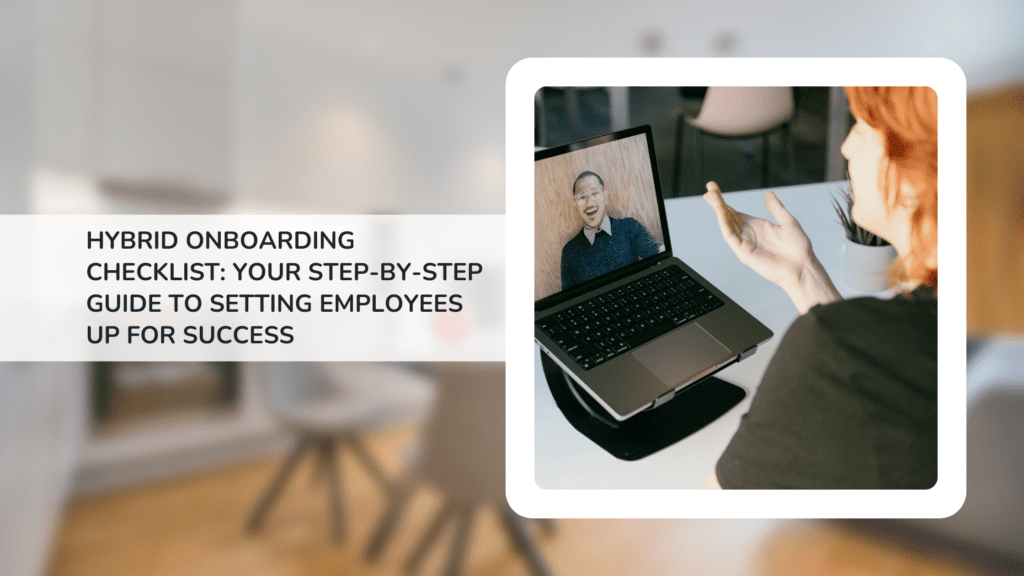Professional Development expert Lyndon Friesen dives into DiSC assessments and how you can use them to hire A-player candidates in your organization.
Written by Lyndon Friesen, who leads our Professional Development arm of Outback Team Building, called Ignitor. Over the past 10 years, Lyndon and his skilled team of Facilitators have led over 800 different learning and development events for over 500 different organizations across North America.

Updated: July 8, 2025
When I talk to business leaders about hiring, one question always comes up:
“How do I know I’m choosing the right person for my team—and not just someone who looks good on paper?”
If there’s one tool I believe belongs in every leader’s toolkit, it’s DiSC.
But let me be blunt: DiSC only matters if you’re prepared to use it as more than a label. If you want to leverage DiSC to create a high-performing team, you need to be able to apply your learnings rather than simply reading the reports.
In this article, we’ll explore what DiSC assessments are, what they can tell you, and how you can integrate them into your recruitment process.
What is DiSC?
DiSC isn’t a personality test. It’s a practical tool that helps you look beneath the surface when hiring to understand the behaviors behind one’s work.
A great interview can project with accuracy not just how successful one will be in the role, but also how they will go about achieving that success.
- For example:
- How do your values show up at work?
- What kinds of activities deflate or energize you?
- What will be your preferred decision-making style and why?
- In conflict or differences of expectations, how do you prefer to resolve issues with others/peers?
- Why does it always look like you are reflecting on what others are saying, or what is the urgency behind you moving forward?
- How can a leader ensure they are getting the very best of you?
In a recruitment context, DiSC helps you understand how candidates naturally behave, communicate, and respond under stress.
It’s not about labeling people or predicting who can do a job. Rather, it’s about gaining insight into how someone will fit into the dynamics of your team and the specific demands of the role.
Instead of putting people into rigid boxes, DiSC explores four key behavioral styles:
- Dominance (D): Direct, decisive, and driven by results
- Influence (I): Energetic, social, and focused on relationships
- Steadiness (S): Patient, supportive, and calm under pressure
- Conscientiousness (C): Analytical, precise, and focused on accuracy
Each person has a unique blend of these styles. Some lean strongly toward one, while others sit somewhere in the middle.
At Outback, we use DiSC as part of our hiring process because it gives us a clearer picture of how someone might show up on the job.
This doesn’t just demonstrate their skills. It provides insights into how they communicate, solve problems, handle feedback, and work under pressure.
That’s crucial information for building a team that performs well together rather than a group of individuals who might clash or duplicate each other’s strengths.
DiSC gives hiring managers the ability to:
- Spot gaps in team dynamics that new hires could fill
- Predict how a candidate might handle the demands of the role
- Adapt onboarding and training to support different styles
- Make smarter choices that go beyond the résumé
If you’re serious about building an A-Team, DiSC is a lens you can’t afford to ignore.
Why DiSC is More Than a Personality Test
At its core, DiSC is a tool designed to create change. Whether you’re proactively growing your business or dealing with a crisis, real progress starts with awareness.
DiSC is meant to spark awareness first, then acceptance, and finally application.
And that’s where most organizations fall short. They stop at awareness of, for example, who might be a D and who is an S.
But if you never do anything with that insight, nothing changes.
When it comes to hiring, awareness is your starting point. But application is how you hire people who not only look great on paper but actually elevate your team.
DiSC Helps You Find Your Team’s Gaps and Avoid Hiring Clones
One of the biggest hiring mistakes I see is leaders surrounding themselves with people just like them. It feels comfortable, but it can cripple your team’s balance.
Imagine a leadership team made up entirely of high-D profiles: decisive, fast-moving, and blunt.
That might sound efficient, until you realize there’s nobody there to slow things down, ask thoughtful questions, or nurture relationships and morale.
A truly high-performing team needs representation across all four DiSC quadrants:
- D – Dominance: Driven, results-focused
- I – Influence: Energetic, people-oriented
- S – Steadiness: Calm, supportive, steady
- C – Conscientiousness: Detail-focused, analytical
Before you start hiring, ask yourself:
“Where are our gaps, not just in skills, but in the way people show up and interact?”
DiSC helps you pinpoint those gaps so you’re hiring people who complement your team, not duplicate it.
3 Ways to Use DiSC in Your Company’s Hiring Process
By now, you know that application is the only way to use DiSC insights to your advantage.
So, here’s how to put DiSC to work in your hiring process so you can hire smarter, not just faster.
1. Assess Your Current Team
Start by mapping out your existing team’s DiSC profiles. Have everyone complete an assessment and plot where they fall on the DiSC chart.
Then, look for patterns:
- Are you overloaded with D’s but missing S’s?
- Do you have plenty of I’s but no C’s?
- Are you missing detail-oriented people who can double-check work, or creative thinkers who keep morale high?
These insights become your hiring roadmap. When you understand the shape of your current team, you’ll know exactly what kind of person you need to round things out.
2. Identify Role-Specific Behavioral Needs
Before you ever sit down with a candidate, define the behavioral traits the role truly demands.
Think beyond technical skills and consider the human qualities that will help someone thrive in that job.
For example:
- A sales role usually requires someone with at least some I traits, like being comfortable building relationships and handling rejection
- A finance role often demands strong C qualities, including precision, attention to detail, and consistency
- A project manager might need steadiness under pressure, leaning toward S traits, with enough D to keep things moving
At Outback, we don’t just teach this stuff. We use it ourselves.
When we’re hiring, we integrate DiSC assessments to help us understand how candidates might fit into our existing teams and roles.
Certain positions demand natural relationship-building skills, while others call for meticulous attention to detail.
DiSC helps us look beyond resumes to see how someone might mesh with our team’s dynamic. It’s not about labeling people. I’s about making smart choices that set both individuals and our business up for success.
3. Use DiSC-Informed Interview Questions
While having candidates take the full DiSC assessment is ideal, you can also sprinkle DiSC-inspired questions into interviews to get a sense of behavioral tendencies.
This can include questions like:
- “When you’re working on a team project, what role do you naturally take on?”
- “How do you like to receive feedback—direct and to the point, or with more context?”
- “What motivates you the most at work?”
- “Describe a time you handled a tight deadline. How did you approach it?”
- “When facing conflict, do you prefer to address it right away or step back first?”
These questions aren’t tricks. They help you see how candidates operate beyond their technical skills.
For instance, someone who says they prefer immediate, blunt feedback might lean toward D traits, while someone who wants time to reflect could indicate S or C tendencies.
But remember: DiSC doesn’t dictate who you hire. It simply gives you a better lens to make informed decisions.
Avoid Using DiSC to Put People in Boxes
Here’s something critical to remember: DiSC is a tool for insight, not a verdict on who someone is or what they’re capable of.
It doesn’t mean someone in the C quadrant can’t thrive in a people-focused role, or that a high-D person is destined to bulldoze their team. Humans are adaptable, and behaviors can flex in different contexts.
At Outback, we’ve worked with countless individuals who excelled outside the “typical” DiSC pattern for their role, and they often became some of the strongest contributors because they brought balance and fresh perspective to the team.
It’s also important to remember that DiSC styles don’t give permission for poor behavior.
For example, a high-D employee doesn’t get a free pass to steamroll colleagues just because “that’s who they are.”
DiSC should be used to build understanding and improve collaboration, but not to excuse conflict or inflexibility.
When you use DiSC as a guide rather than a box, it becomes a powerful ally in hiring and in keeping your A-Team performing at its best.
DiSC After the Offer: The Bridge to Great Teams
While DiSC is invaluable during hiring, its true impact shows up once your new team member is on board.
Too often, companies run DiSC assessments during recruitment and then forget about them entirely.
That’s a mistake.
DiSC can help you tailor onboarding, manage team dynamics, and navigate conflicts before they become issues.
Even small adjustments go a long way. This can include:
- How you onboard someone with a high-C style versus a high-I style
- How you structure team meetings to balance D’s drive for speed and S’s need for inclusion
- How you handle conflict when styles clash
When we run DiSC workshops for clients, we dedicate about 75% of the session to helping teams apply insights in real-world situations, not just reading reports.
In fact, we request that our customers have their teams take DiSC assessments well in advance of our sessions and get familiar with the results so that we can focus on our efforts on applying those learnings to their team and business.
That same principle holds true for hiring: the real magic happens when you put DiSC insights into action, both during interviews and as you integrate new team members.
If you’re looking to hire your A-Team, DiSC is a powerful tool, but only if you’re willing to go beyond labels and put insights into action.
Use it to identify gaps on your team, hire complementary personalities, and, most importantly, help people thrive once they’re part of your organization. At Outback, we offer programs like Discovering Workstyles with DiSC® to help companies bring DiSC to life. Whether you’re hiring new talent or strengthening an existing team, we’re here to help turn DiSC insights into lasting results.
Learn more about DiSC.
Get in touch with our Employee Engagement Consultants today to learn how you can use DiSC to empower stronger, more cohesive teams.



